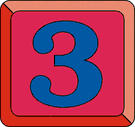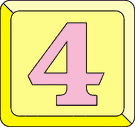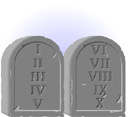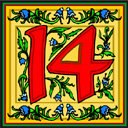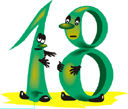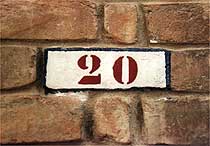Count to 20 in Spanish
Counting from 0 to 20 in Spanish. Click on the image to hear the pronunciation of numbers in Spanish 1-20. For more Spanish numbers, see our Spanish Numbers Game!
Spanish Numbers 1-20
The Household size increase without increase in the food, so share of the same food for more people is the source of poverty. Winston Churchill, a man to whom the fate of Britain was being entrusted, suffered from major depressive episodes that he used to call them Spanish numbers 1-20. There was also a reoccurrence in the outbreak of tuberculosis in the 1980s which presented itself to be usually multi-drug resistant and this was enhanced by the numbers in Spanish 1-20 (Rai et al.). When leaders are positive about certain things, that positive light becomes contagious among the school staff and community. China’s path to reach its current state involved a long and arduous journey that spans a history of several thousand years.
The way that people and nonhuman creatures speak to numerical qualities nonverbally utilizing a typical intellectual procedure is entrenched [1–7]. Both human and nonhuman creatures can nonverbally assess the numerical estimations of varieties of spots or arrangements of tones [8–12] and figure out which of two sets is numerically bigger or littler [13–19]. At the point when grown-up people and nonhuman creatures make rough numerical correlations, their exhibition is correspondingly obliged by the proportion between numerical qualities (i.e., Weber's law; [7]). Hence, discrete images, for example, number words and Arabic numerals are by all account not the only course to numerical ideas; both human and nonhuman creatures can speak to number around, in a nonverbal code.
1-20 in Spanish
The parallel psychophysics for number separation in grown-up people and different nonhuman creature species involves a developmentally antiquated framework for speaking to number. Inside this framework, numerical portrayals take on a simple size organization: mental portrayals of numerical qualities are relative to the numerosities they speak to (e.g., [8,16]). A key bit of leeway for speaking to number in a simple organization is that these portrayals can go into number-crunching tasks, for example, requesting and expansion [7]. Be that as it may, in spite of the fact that there is a lot of proof that creatures speak to the ordinal connections among numerosities (e.g., [14–17]), few examinations have tended to whether creatures can perform other number juggling activities, and even less investigations have straightforwardly thought about execution between grown-up people and nonhuman creatures on a similar math task.
Number juggling tasks, for example, expansion, subtraction, division, and augmentation—require mental changes over numerical qualities. Expansion is a number-crunching activity that includes consolidating at least two quantitative portrayals (addends) to frame another portrayal (the entirety). The capacity to rationally consolidate portrayals is characteristic to numerous parts of human comprehension including language and emblematic scientific articulation [20]. One probability, at that point, is that the capacity to consolidate portrayals, regardless of whether etymological or number-crunching, is one of a kind to people.
There is, notwithstanding, officially some proof that nonhuman creatures can perform inexact, nonverbal expansion on numerical qualities [21–28]. For example, Flombaum, Junge, and Hauser [21] found that when untrained rhesus monkeys looked as two gatherings of four lemons were set behind a screen, they looked longer when the screen was brought down to uncover just four lemons (off base result) than when the right result of eight lemons was uncovered (see likewise [22,23]). In this way, as estimated by their looking time, monkeys unexpectedly structure numerical desires when they see expansion occasions. Besides, Beran and partners [24–26] have shown that nonhuman primates dependably pick the bigger of two nourishment amounts, notwithstanding when this requires following individually augmentations to various reserves after some time. Such information give significant proof that creatures can frame numerical portrayals when this requires individually aggregation, yet they leave open the subject of whether creatures can perform nonverbal number juggling by consolidating set-level portrayals.
1 through 20 in Spanish
Different investigations have prepared creatures to connect discretionary images with numerosities and afterward tried the creatures' capacity to include images [27,28]. For instance, pigeons dependably picked the mix of two images that showed the bigger measure of sustenance [27]. Be that as it may, when the quantity of sustenance things related with the images was changed however all out remuneration esteem (mass) was held consistent, the pigeons neglected to decide the numerical whole of the nourishment things, recommending that they played out the expansion task by speaking to the absolute reward worth spoken to by the two images, as opposed to by performing numerical math. Along these lines, nourishment things may not be an ideal upgrade for testing unadulterated numerical number juggling in nonhuman creatures.
Until this point in time, the most powerful trial of number-crunching in a nonhuman creature was led on a solitary chimpanzee [28]. In this investigation, an image prepared chimpanzee picked the Arabic numeral that related to the aggregate of shrouded sets of oranges, for sets that summed to under four things, more than 14 test preliminaries. Interestingly, investigations of grown-up human nonverbal expansion have tried numerous preliminaries with a huge scope of numerical qualities and number juggling issues (e.g., [4,13,29,30]). In this way, in spite of the fact that there is suggestive earlier proof that nonhuman creatures may perform mental number-crunching, the information are not authoritative. A significant restriction of every single earlier investigation of nonhuman number-crunching is that they utilized definitely various strategies from those used to test grown-up human nonverbal number-crunching. How much nonhuman math parallels the nonverbal number-crunching of grown-up people is along these lines unsure.
Count to 20 in Spanish
A few investigations give convincing proof that without verbally checking, grown-up people can pick the rough total of at least two sets. These examinations expected subjects to include two varieties of self-assertive components and after that select the right total, more than several preliminaries, testing a wide scope of numerical qualities (e.g., [4,13,29,30]). For instance, in one examination [13], grown-ups were given two varieties of spots (of 1–62 components) and were required to rationally include the numerical estimations of the sets to decide if a third test cluster was roughly equivalent to their total. Execution was tweaked by the abstract distinction between the right aggregate and the test cluster (i.e., Weber's law); precision declined as the proportion between the decisions (littler worth/bigger worth) moved toward one. Along these lines, grown-up people have the limit with regards to exact image based number-crunching, and they are additionally ready to perform surmised option on nonsymbolic amounts.
Our objective was to think about straightforwardly the nonverbal number juggling capacities of monkeys and grown-up people utilizing a similar undertaking and boosts. Monkeys (n = 2) and understudies (n = 14) were given two arrangements of specks on a touch screen isolated by a deferral (Figure 1). Following the introduction of these two sets, subjects were required to pick between two exhibits: one with various specks equivalent to the aggregate of the two sets and a second, distractor cluster, which contained an alternate number of spots. Our outcomes show that monkeys perform surmised mental expansion in a way similar to understudies tried on a similar expansion task.
Popular Phrase: ser future conjugation | Telling Time in Spanish | Conjugated Verb: dar - to give [ click for full conjugation ]




